Most gardeners need to bid adieu to garden flowers by the end of fall. However, if you live in an area with mild winters, you may be able to grow flowers all winter long. In this guide, you’ll find some of the hardiest and most rewarding flowers to grow throughout the winter months so you can reap the rewards of flower gardening all year round!

Jump to:
- 16 cool-season flowers that bloom in mild winters
- 1. Pansies and violas
- 2. Sweet peas
- 3. Snapdragons
- 4. Stock
- 5. Calendula
- 6. Cyclamen
- 7. Marigolds
- 8. Bachelor buttons
- 9. Hellebores
- 10. Zonal geraniums
- 11. Lobelia
- 12. Nasturtiums
- 13. Petunias
- 14. Ranunculus
- 15. Alyssum
- 16. Asters
- Frequently asked questions
- What are the first flowers to bloom end of winter?
- Why are my flowers blooming in winter?
- Do any roses bloom in winter?
- Do any flowers bloom in the snow?
- How do I protect my outside plants in winter?
- What temperature is a killing frost?
- Summary
16 cool-season flowers that bloom in mild winters
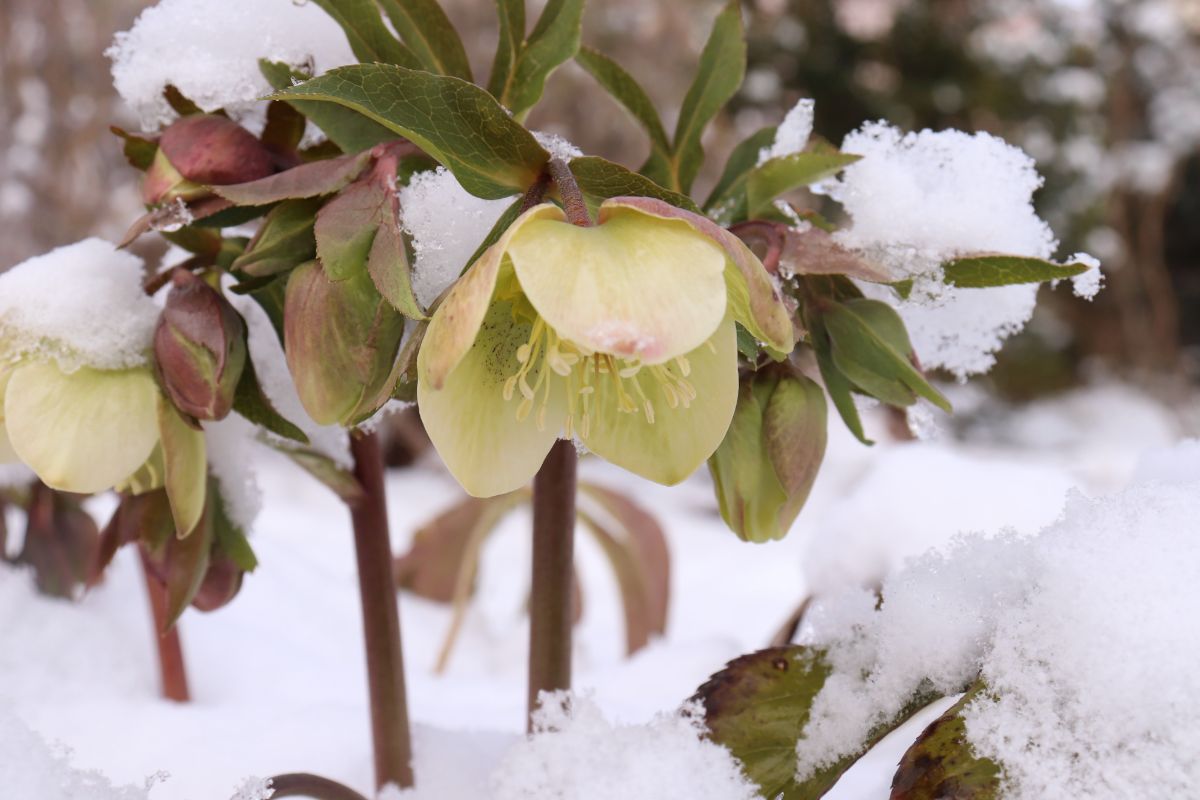
Cool-season flowers can withstand cold temperatures, and many of them can also bounce back after a light frost or two. While these plants may not survive hard freezes and severe cold, if you live in a spot where the ground doesn’t freeze solid, the tough plants in the list below can continue to bloom from fall to spring. And if an unexpected cold spell does occur, there’s always the option to protect your plants with frost blankets or cloches until conditions improve!
1. Pansies and violas

| Plant name: | Pansies and violas |
| Light requirements: | Full sun to part shade |
| Water requirements: | Moderate |
| Growing zone: | Zones 4 to 10, depending on variety |
Pansies and violas are top plants to grow in porch planters and hanging baskets, but these easy-going plants can also be used in garden beds and garden borders. Prized for their colorful flowers that come in almost any colored you could want, pansies and violas coordinate beautifully with other cold hardy plants, including sweet peas and snapdragons. And while these flowers may look dainty, they’re surprisingly cold-tolerant, and they can even bounce back after frosts!
In areas with severely cold winters, pansies, and violas are commonly kept as annuals. But if you live in a spot where winters don’t get super cold, you can grow pansies and violas as short-lived perennials, and they can bloom throughout the winter months, too. Although these two plants may look similar, pansies produce larger flowers, while violas produce more blooms.
2. Sweet peas
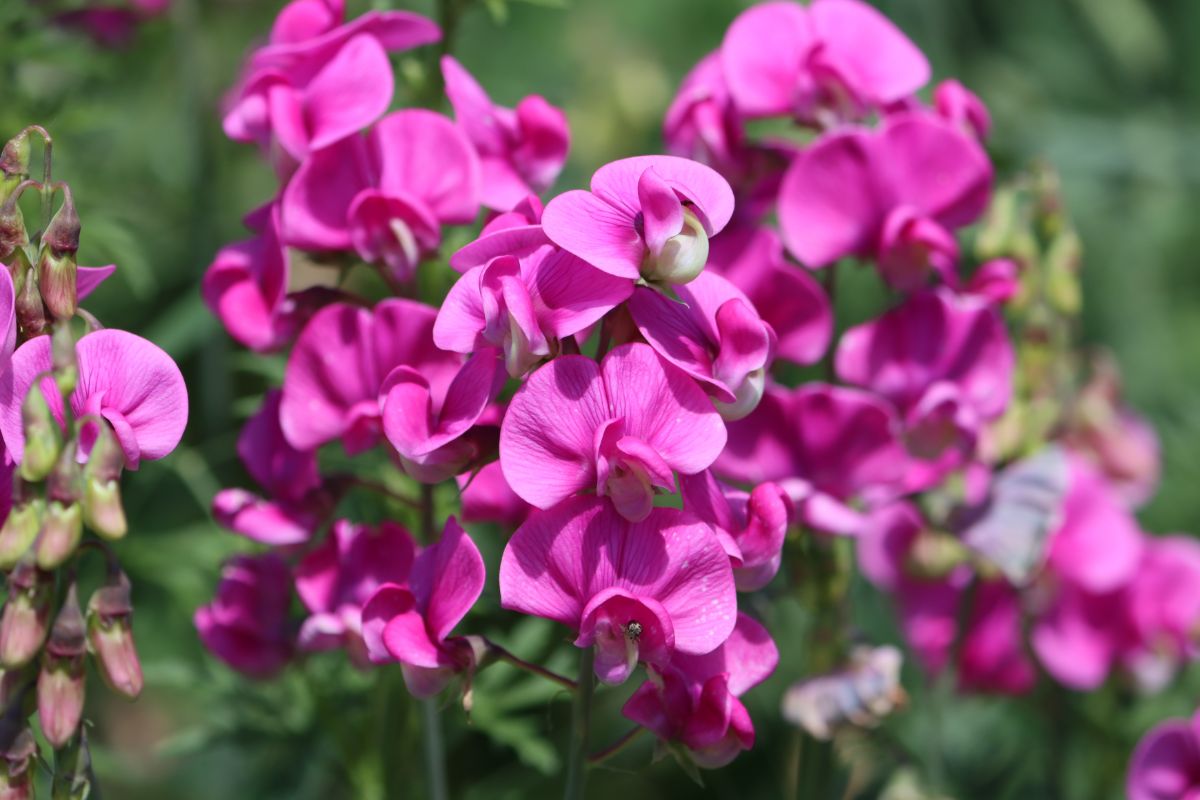
| Plant name: | Sweet peas |
| Light requirements: | Full sun; can benefit from part afternoon shade in hot areas |
| Water requirements: | High |
| Growing zone: | Zones 3 to 8 |
A top choice for cool-weather gardens, sweet peas are commonly grown in spring and autumn in areas where winters are harsh. But if you live in a mild climate, you can keep sweet peas flowering throughout the winter months, too. However, you’ll need to choose the right sweet pea varieties for winter flowers.
Winter flowering sweet peas, like ‘Solstice Soft Pink’ and ‘Solstice Rose,’ flower earlier in the year than other cultivars, and they can bloom even when there are just 10 hours of daylight. When keeping sweet peas, be sure to plan ahead and install plant supports or trellises before you sow your seeds. Sweet peas are climbers, but if you install trellising after planting, you may damage sweet peas’ delicate stems.
3. Snapdragons
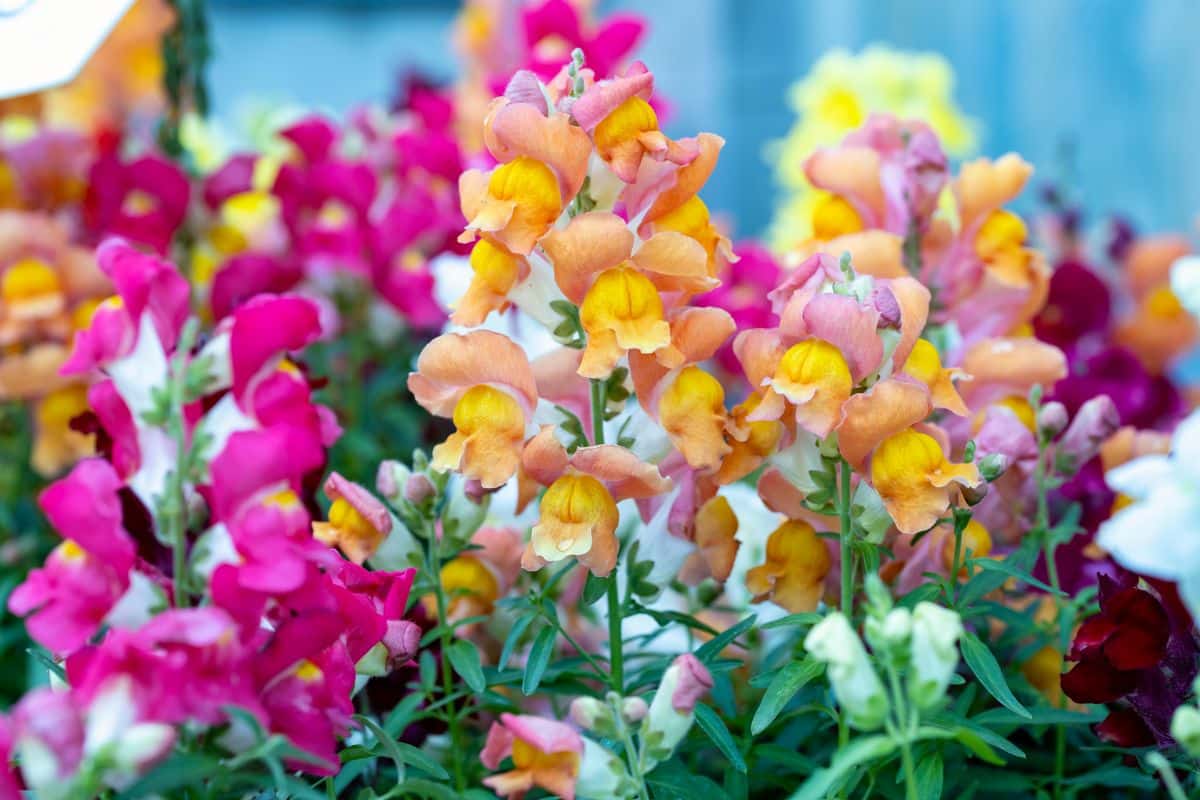
| Plant name: | Snapdragons |
| Light requirements: | Full sun to part shade |
| Water requirements: | Moderate |
| Growing zone: | Zones 7 to 11 |
Another cool season favorite, snapdragons, can flower from spring through fall in most areas, and many gardeners keep these plants as annuals. But in mild climates, snapdragons grow as short-lived perennials, and they can bloom in winter, although their flowering may be less prolific.
One of the great things about snapdragons is that they come in a veritable rainbow of colors, including orange, yellow, pink, and vivid purple. These flowers also have the cunning ability to move when you press on their sides, and that movement is said to resemble the fearsome mouth of a dragon. Growing between 6 and 15” tall, snapdragons are large enough to grow in flower beds, but they look particularly becoming when they’re kept in planters and window boxes.
4. Stock
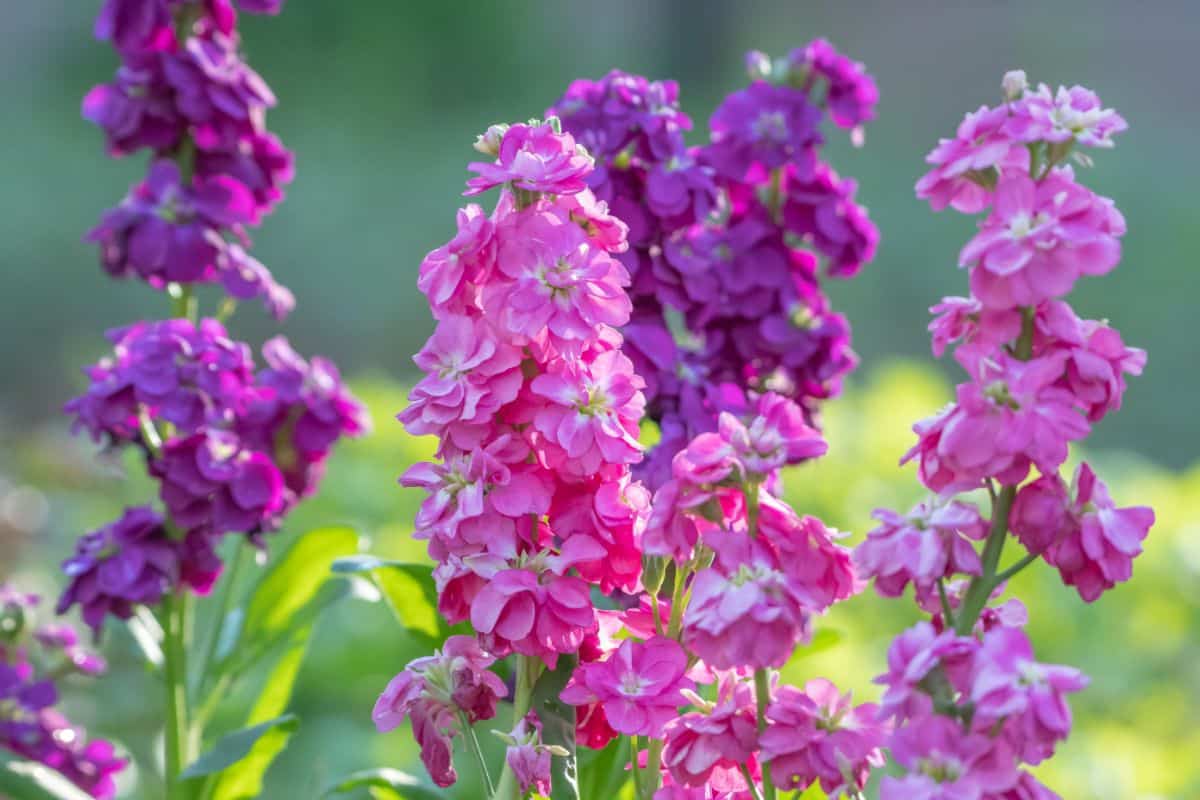
| Plant name: | Stock |
| Light requirements: | Full sun to part shade |
| Water requirements: | Moderate |
| Growing zone: | Zones 7 to 10 |
Also known as gillyflower, stock plants are grown in most areas as springtime bloomers. But in gardens with mild climates, stock plants may flower even earlier in the year, and they may even bloom in winter!
Stock plants have lots to recommend them. Not only do these plants come in many distinct colors, but they produce a delicious, clove-like aroma that’s always a pleasure to encounter in the garden. These plants are also easy to keep, and they can adapt to both sun and part shade, although stock will bloom more prolifically if you deadhead old flowers when they start to fade.
5. Calendula
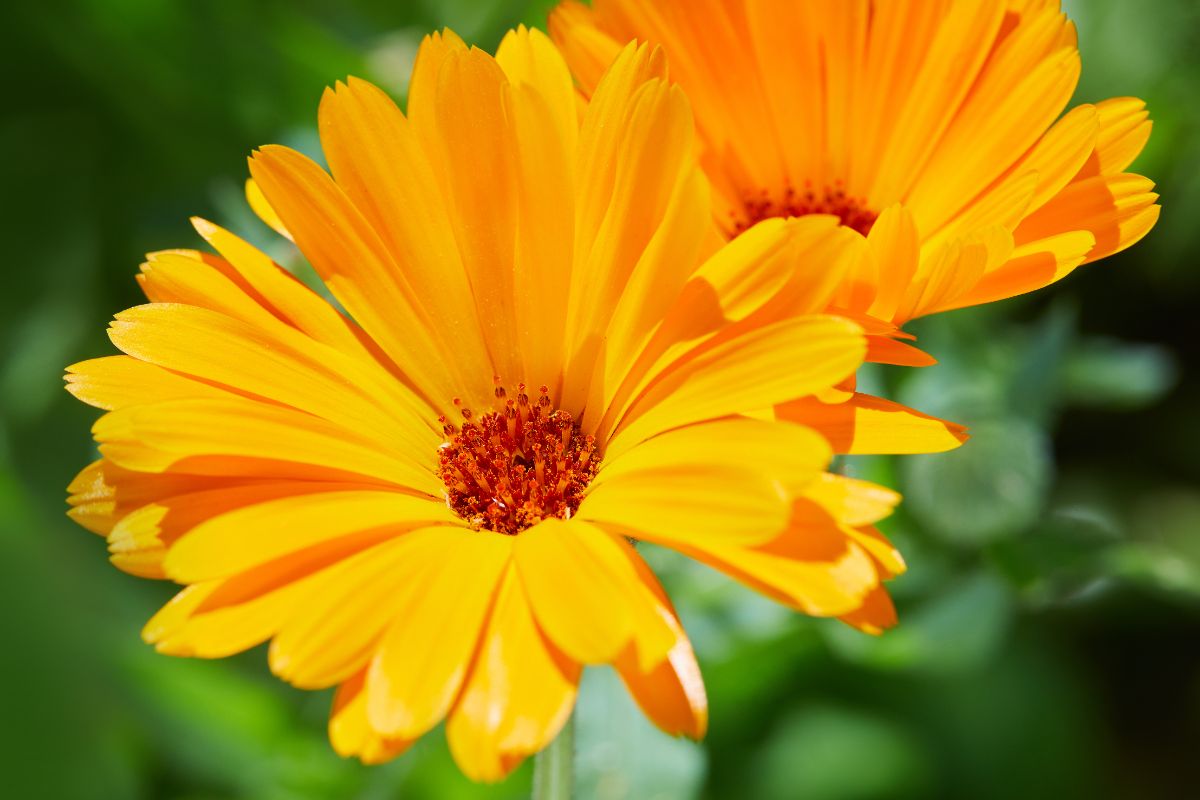
| Plant name: | Calendula |
| Light requirements: | Full sun to part shade |
| Water requirements: | Moderate |
| Growing zone: | Zones 9 to 11 |
Many growers cultivate calendula flowers during the warmer months, but calendula plants can tolerate fall frosts, too. However, if you live in a mild climate, you can also sow calendula seeds in autumn and get flowers in late winter, long before other plants start to bloom.
Calendula flowers have a sunny disposition, with daisy-like petals that come in shades of orange and yellow. Depending on your gardening style, you can keep calendula as purely an ornamental, or you can cut the flowers for indoor arrangements or to make homemade fabric dyes. For even more options, calendula flowers and leaves are also edible, and they’re commonly used as medicinals, too.
6. Cyclamen
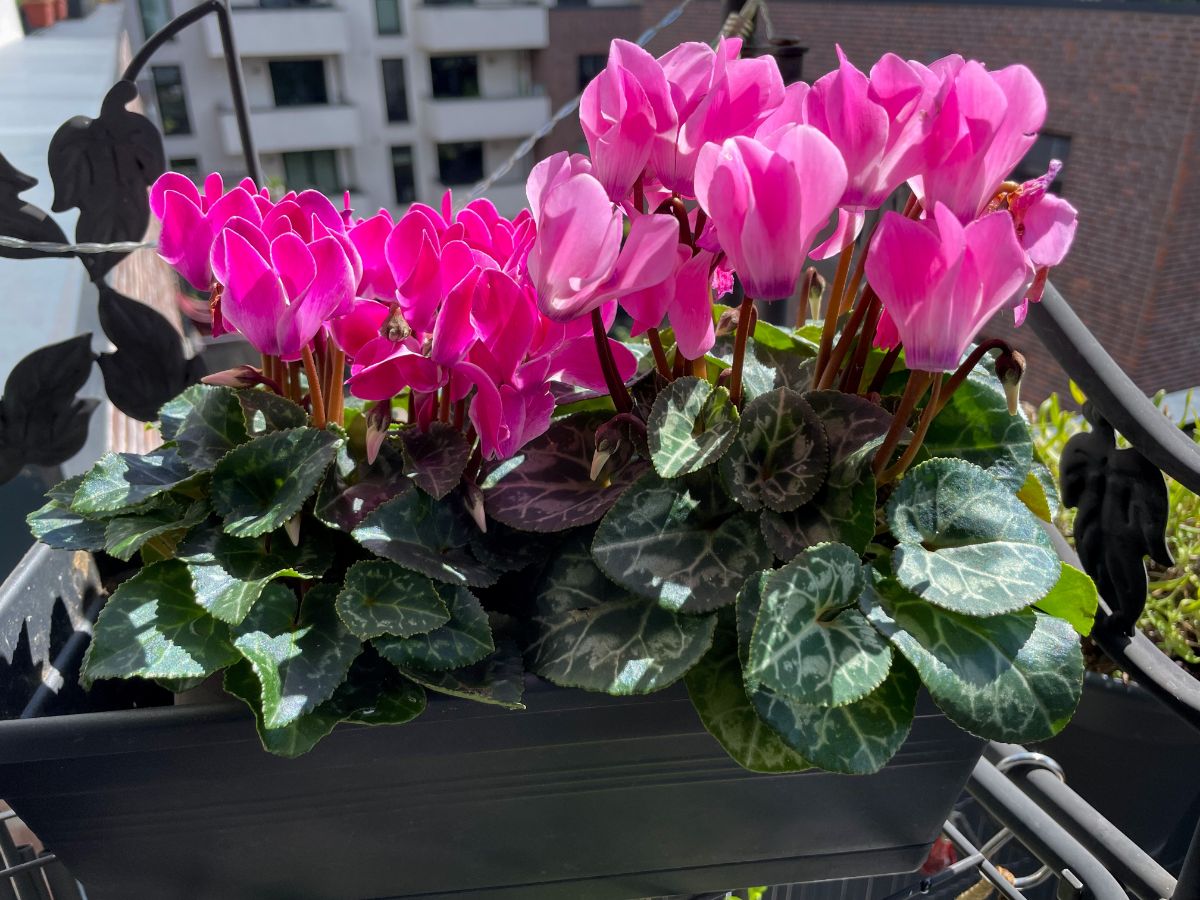
| Plant name: | Cyclamen |
| Light requirements: | Part shade |
| Water requirements: | Moderate to low |
| Growing zone: | Depends on variety |
Cyclamen plants are native to areas in Europe and the Middle East, where summers are hot and winters are cool and damp. Typically, these plants go dormant during the summer months, and their long-lasting flowers can be admired from fall until spring. Many growers cultivate cyclamen as houseplants, thanks to their heart-shaped leaves and flowers, but if you live in an area with mild winters, you can also keep cyclamen in your winter garden.
Like many bulbing plants, cyclamen tubers are usually planted in the fall, but they shouldn’t be buried very deep. Instead, plant cyclamen tubers so that they’re sitting just below the soil line and then mulch them well to protect them from the cold. Depending on your growing zone, you can choose between hardy and florist’s cyclamen… just keep in mind that florist’s cyclamen bloom longer into the winter months.
7. Marigolds
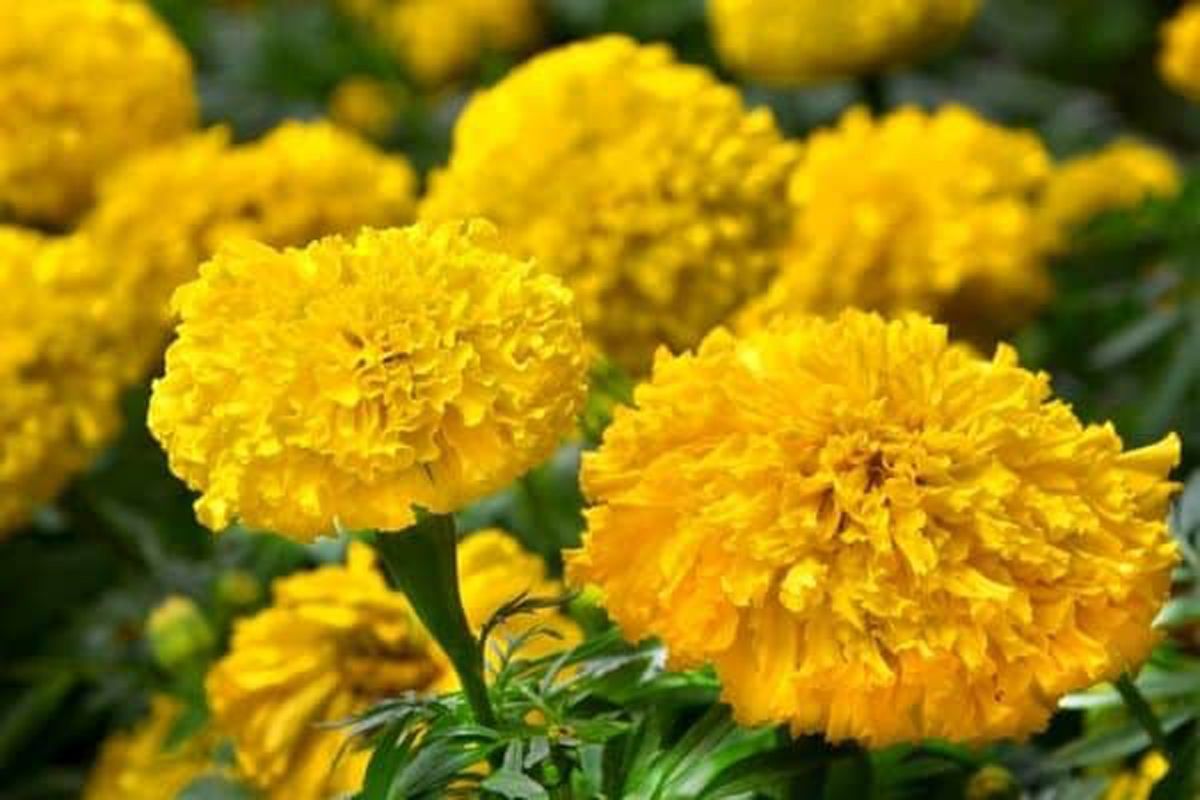
| Plant name: | Marigold |
| Light requirements: | Full sun |
| Water requirements: | Moderate |
| Growing zone: | Zones 2 to 11 |
Marigolds are often grown in vegetable gardens to deter pests, but marigolds’ cheerful golden and orange blooms look appealing in container gardens and flower beds, too. Most often, gardeners start marigolds from seeds, which are planted indoors in spring; however, marigolds can also be grown from nursery starts. When grown from seed, marigolds typically begin to bloom in about 8 weeks, and they can continue to flower until frosts arrive.
In most areas, marigold plants die back in winter. But if you live in an area where winters aren’t severe, you may be able to keep marigolds flowering throughout the winter months. Extra mulch can help ensure marigolds weather winter storms with ease, but you can also add cloches or frost blankets over your plants if you know a cold snap is on the forecast.
8. Bachelor buttons
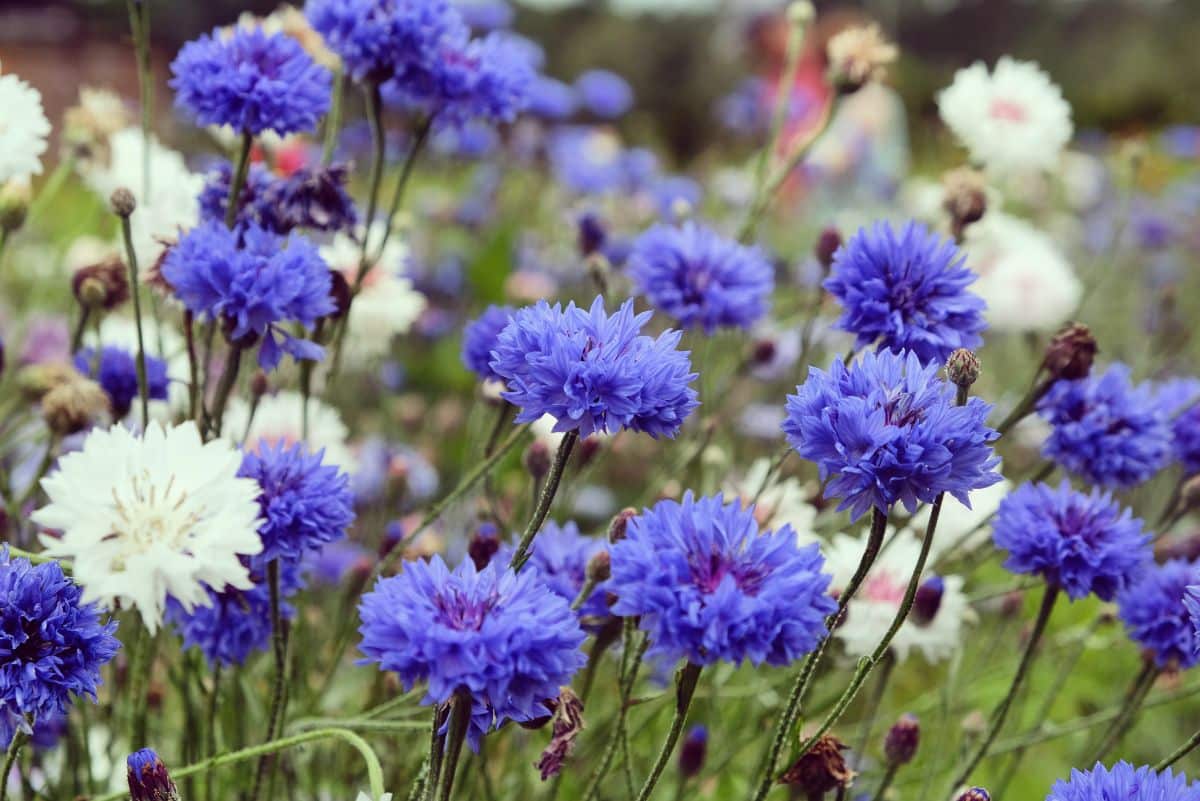
| Plant name: | Bachelor buttons |
| Light requirements: | Full sun; may benefit from part afternoon shade in hot areas |
| Water requirements: | Moderate |
| Growing zone: | Zones 2 to 11 |
Also known as cornflowers, bachelor buttons are well known for their brilliant blue coloration, but you can also find bachelor buttons with purple and white blooms. Easy to grow from seed, bachelor buttons are commonly planted in spring, but they can also be sown in autumn if you live in a mild climate. Once established, bachelor button plants bloom reliably even in winter in warm areas, and they can even survive light frosts.
While bachelor buttons are mostly kept as ornamentals, their pompom-like flowers are also edible, and they can be used as colorful salad toppers. These plants look becoming when they’re grown on their own in gardens, but they can also be kept in containers for some late-season garden color. Try out bachelor buttons with other cold hardy flowers, like marigolds, for winter color that just won’t quit!
9. Hellebores
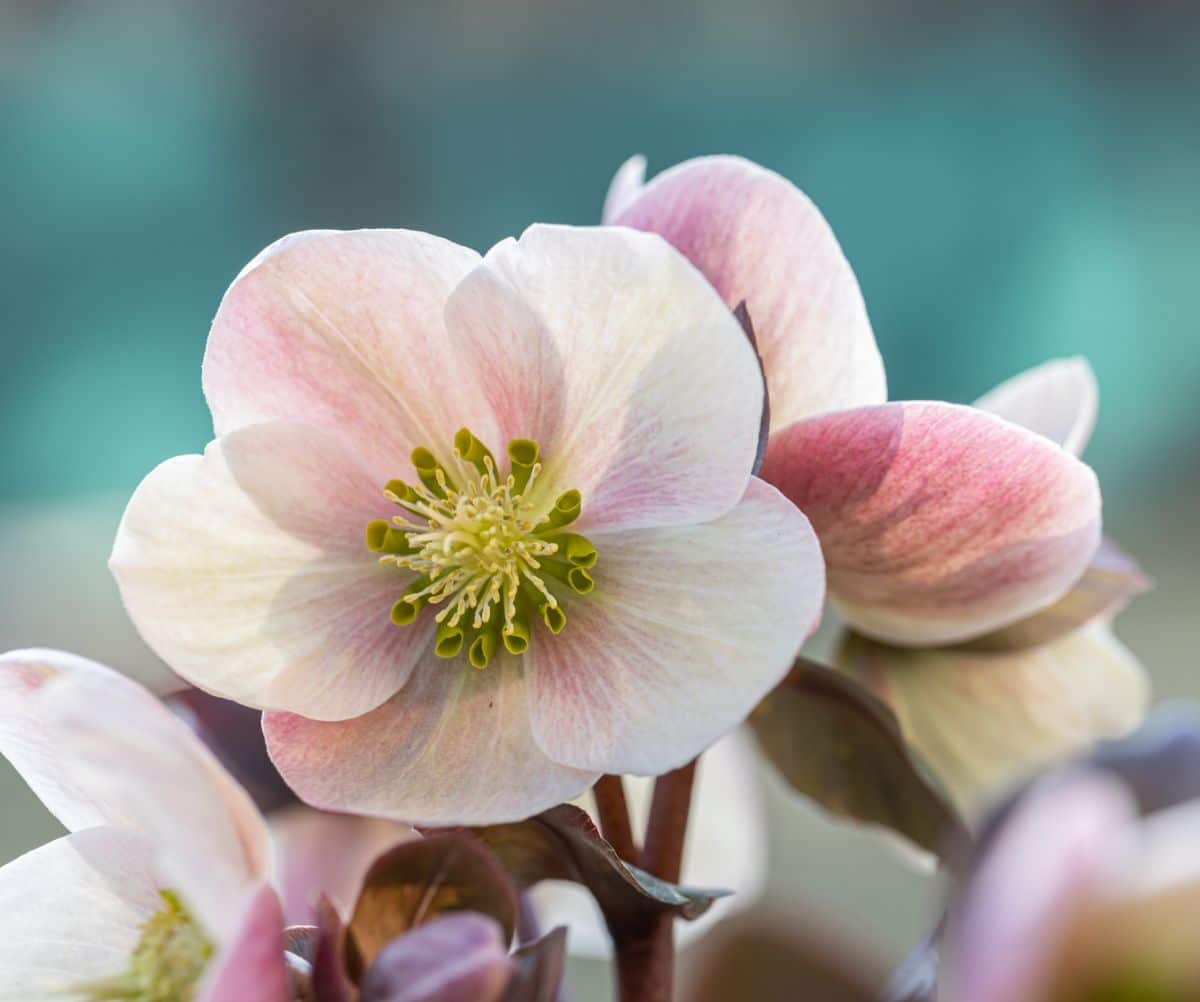
| Plant name: | Hellebores |
| Light requirements: | Full sun to shade; partial shade is ideal |
| Water requirements: | Moderate |
| Growing zone: | Zones 3 to 9 |
Also known as Lenten roses, hellebores typically bloom around Eastertime. But if your garden doesn’t experience harsh winters, you may get hellebore flowers even earlier. This is especially true if you grow early bloomers like Christmas rose hellebores, which bloom from November to January.
Hellebores aren’t bothered by cold whatsoever, and they can even push their way through snow! However, if you want hellebores to grow well, you should locate your plants in full sun to part shade and water them regularly as well. As the temperatures increase in spring and summer, early blooming hellebores tend to fade, but this is normal, and plants should bloom again after their summer dormancy period.
10. Zonal geraniums

| Plant name: | Zonal geraniums |
| Light requirements: | Full sun; may benefit from part afternoon shade in hot areas |
| Water requirements: | Moderate |
| Growing zone: | Zones 9 to 12 |
There are many types of geraniums, but zonal geraniums are one of the most popular, especially if you love keeping flowers in porch planters and hanging baskets. With boldly colored flowers in shades of pink, red, and white, geraniums demand attention, but they’re surprisingly low maintenance. While most growers keep geraniums in pots during the summer months, gardeners in mild climates can continue to grow these plants in winter, too.
Zonal geraniums bloom prolifically, but you can get even more flowers out of your plants by deadheading spent blooms when they start to die back. To do this, snip off old flowers and their attached stems right at the base and clip off yellowing leaves while you’re at it as well. This will redirect your geranium’s energy toward growing more flowers to liven up your porch or patio!
11. Lobelia
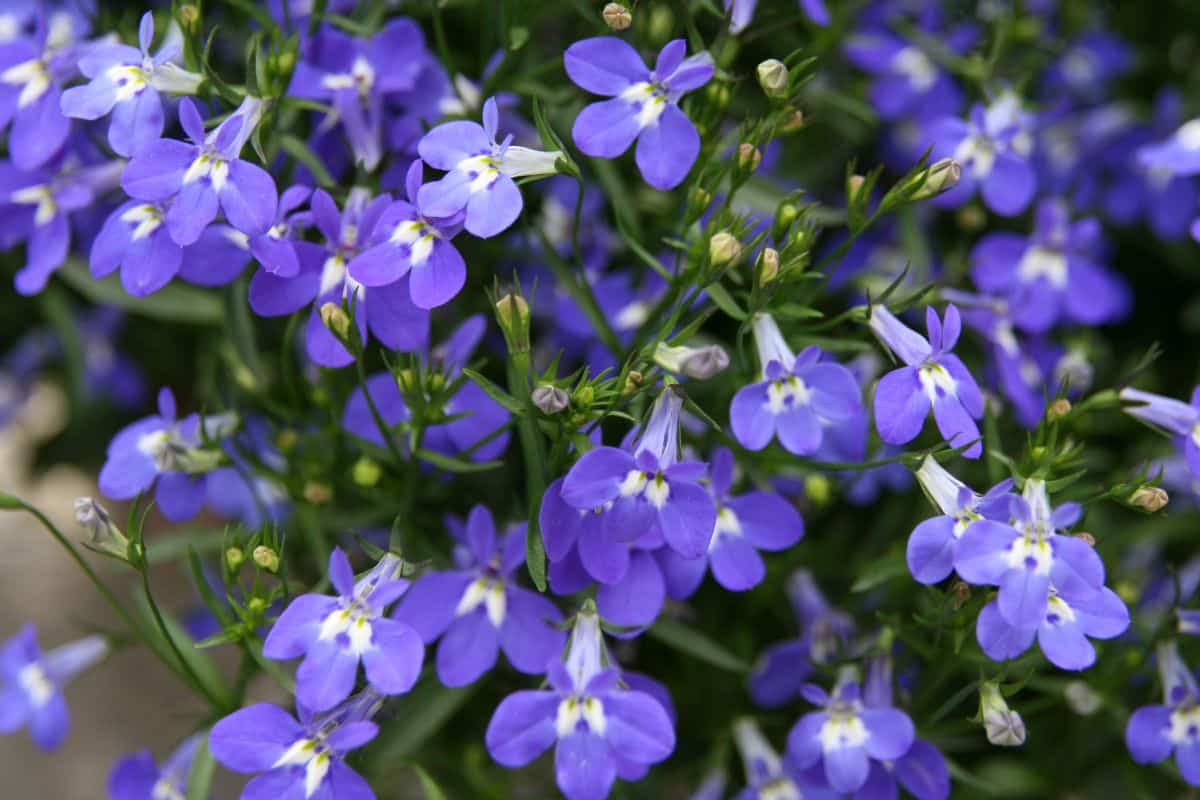
| Plant name: | Lobelia |
| Light requirements: | Full sun to part shade |
| Water requirements: | Moderate |
| Growing zone: | Zones 9 to 11 |
In most areas, lobelia plants die back in winter. But if you live in an area that doesn’t experience hard freezes, you may be able to keep these flowers going throughout the winter months. However, it’s important that you protect your lobelia plants from frost because cold can damage blooms and make plants stop flowering.
Lobelia plants can be grown in garden beds, but they also make colorful additions to hanging planters and window boxes. One benefit of growing lobelia plants in containers is that if temperatures drop, you can easily move your plants indoors for a day or two. If you can’t bring lobelia plants indoors and you know cold temperatures are on the forecast, you can cover your plants up with inverted milk jugs, cardboard boxes, cloches, or frost blankets to give them a bit of added protection.
12. Nasturtiums
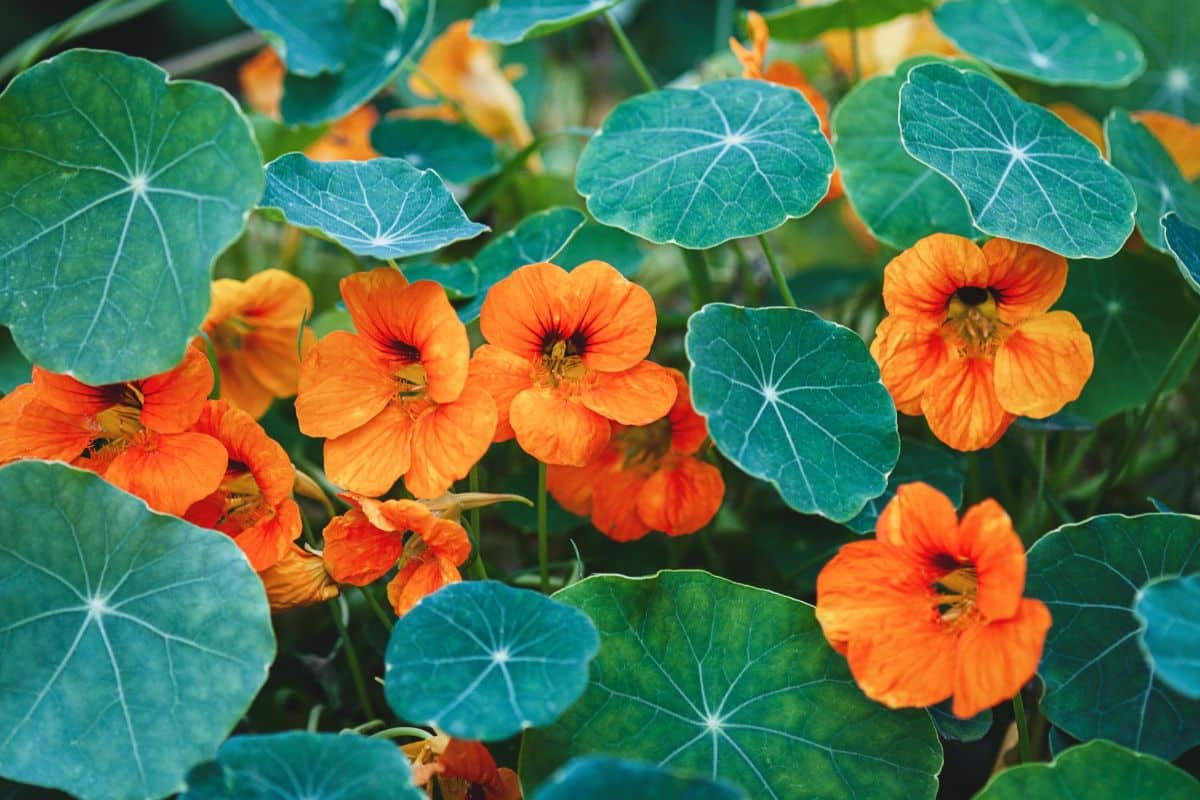
| Plant name: | Nasturtiums |
| Light requirements: | Full sun |
| Water requirements: | Moderate |
| Growing zone: | Zones 9 to 11 |
Nasturtiums are long-season bloomers that start to flower about 4 to 6 weeks after seeds are planted, and they can continue to flower through autumn in most areas. However, in mild climates, nasturtium plants just keep going, and you can find nasturtiums blooming even in the depths of winter. Hardy, even in cold, nasturtiums, plants can survive a light frost or two, but they do need to be protected from freezing conditions.
If you have a large garden or you’d like to keep nasturtiums in hanging baskets, you may want to select trailing-type nasturtiums, which develop long and cascading stems as they mature. But small space gardeners may have better luck with mounding type nasturtiums, as these plants maintain a more compact growth habit. For even more options, you can find nasturtiums with either yellow, white, or orange blooms, and nasturtiums of all colors are entirely edible and they have a delicious, peppery flavor!
13. Petunias
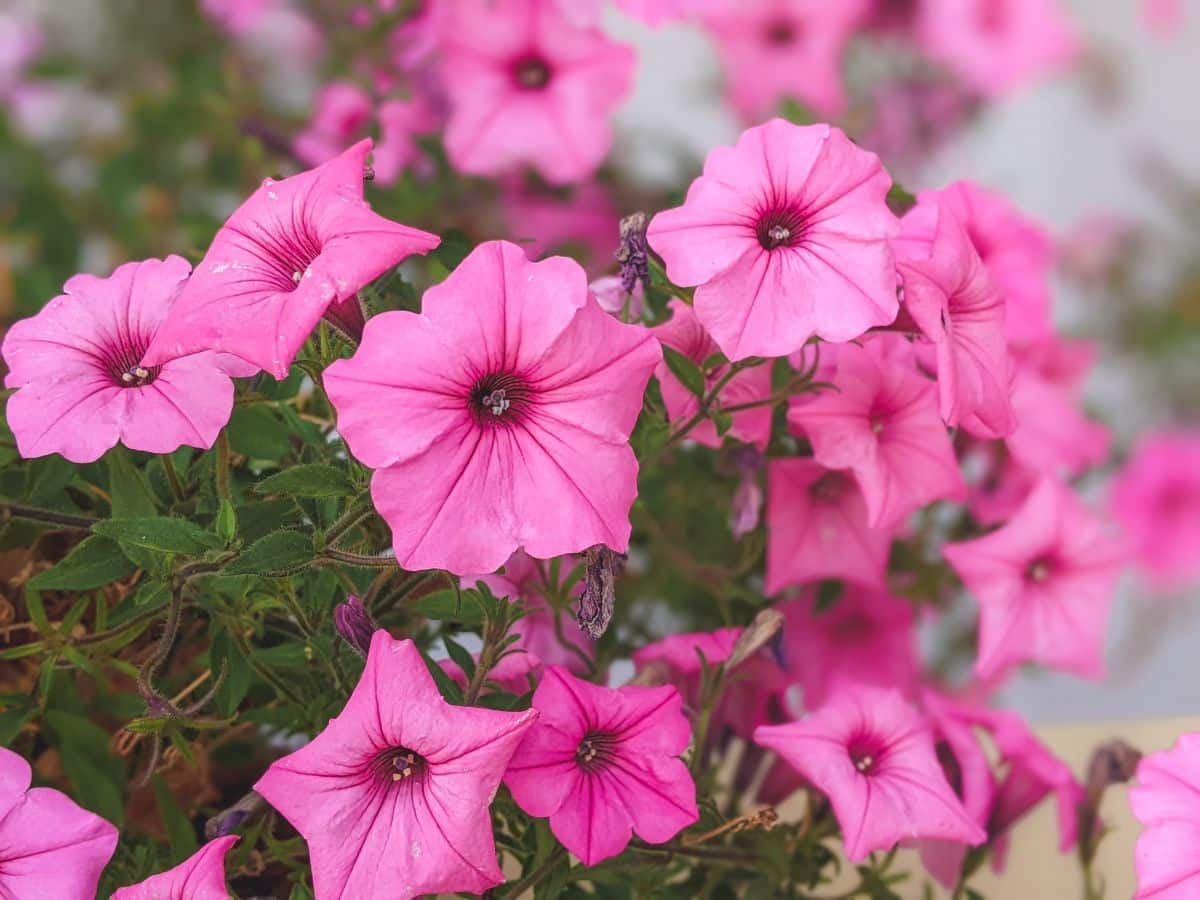
| Plant name: | Petunias |
| Light requirements: | Full sun |
| Water requirements: | Moderate |
| Growing zone: | Zones 9 to 11 |
Petunias grow as perennials in USDA growing zones 9 through 11, and, in these areas, there’s no need to winterize these plants. Instead, petunias can continue to reward garden-goers with flamboyant, trumpet-shaped flowers throughout the winter, as long as temperatures don’t dip below 40F. Wave petunias are known to be slightly more cold tolerant than other petunia varieties, but even these resilient plants can’t withstand freezing conditions.
Petunias produce flowers in almost every color you could want, and Wave petunias generally don’t need to be deadheaded, although they will bloom more abundantly if you pinch them back from time to time. A fine choice for both hanging baskets and porch planters, petunia plants can also make a big impact in garden beds, and they look charming when paired with other cool season beauties, like marigolds and pansies. For even more color, try out bicolored petunia varieties and provide your plants with a diluted liquid fertilizer throughout the growing season to encourage them to flower even more!
14. Ranunculus
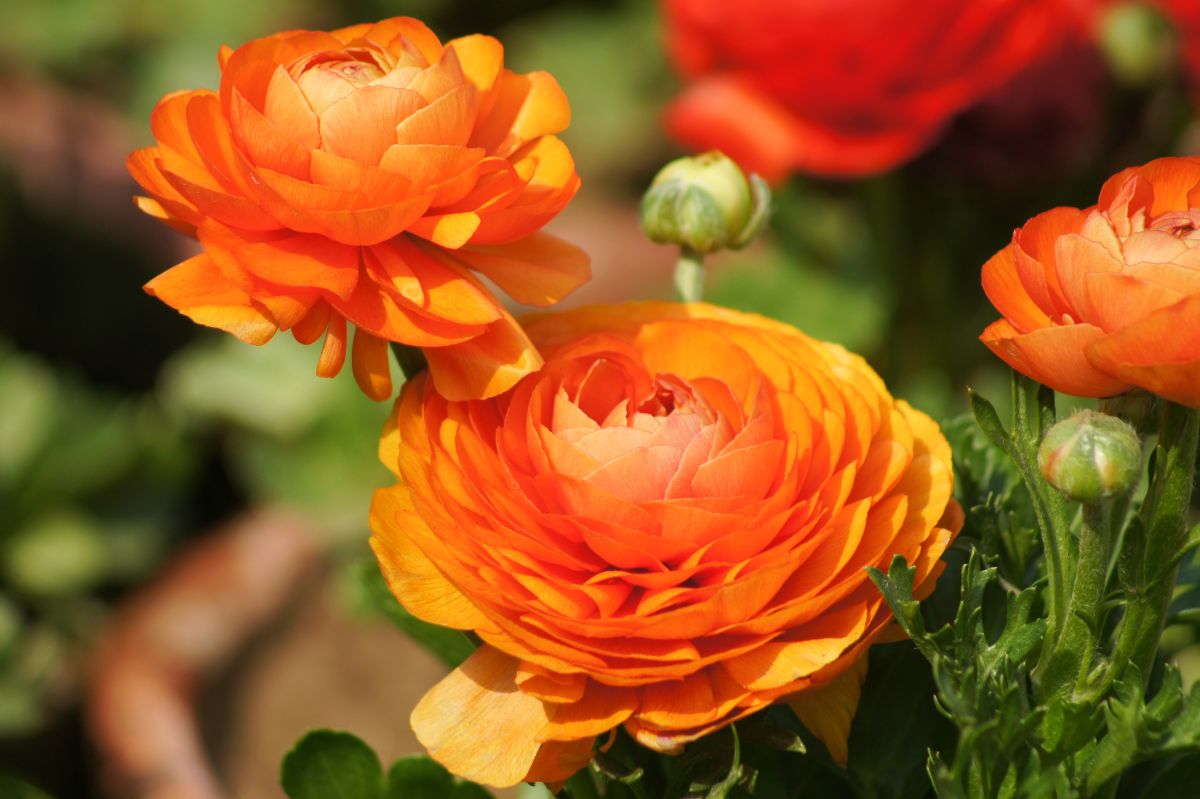
| Plant name: | Ranunculus |
| Light requirements: | Full sun; may benefit from part afternoon shade in hot areas |
| Water requirements: | Moderate |
| Growing zone: | Zones 8 to 10 |
Ranunculus are cool season flowers that have a deceptively dainty appearance. While these plants may look like they can’t handle cold, ranunculus actually flowers best when temperatures are around 55F, and they often bloom in spring -- long before other plants emerge from winter dormancy. But even better, in USDA growing zones 8 through 10, ranunculus corms can be planted in the fall for late winter to early spring flowers!
Ranunculus are closely related to buttercups, but unlike their buttery yellow cousins, ranunculus comes in a medley of shades, including orange, yellow, pink, red, and white. A top choice for cutting gardens, ranunculus look right at home in garden borders and porch planters, too, and they can also be used in homemade wedding bouquets! On top of that, ranunculus plants are easy to grow and ultra beginner-friendly, and they’re even resistant to deer.
15. Alyssum
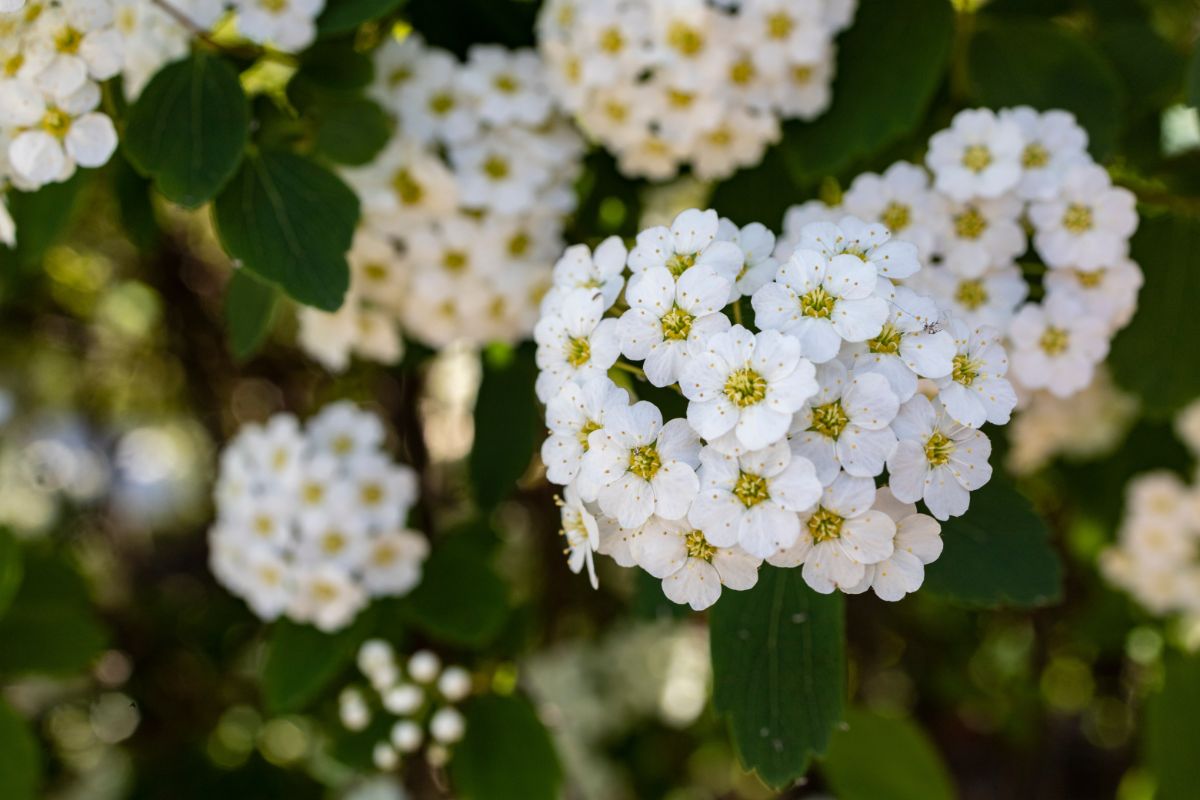
| Plant name: | Alyssum |
| Light requirements: | Full sun to part shade |
| Water requirements: | Moderate |
| Growing zone: | Zones 9 to 11 |
Like petunias, alyssum plants are commonly grown as annuals in most areas; however, they are technically perennials in growing zones 9 through 11. In these regions, alyssum can continue to bloom throughout the winter months, adding much-needed color to beds when other plants aren’t flowering. As temperatures increase in summer, alyssum flowers fade, but they will bloom again when the hot weather passes.
Most commonly, you’ll find alyssum with clusters of deep purple or clean white blooms. But plant breeders have also developed alyssum varieties with reddish-purple and rosy pink flowers as well. Aside from their visual charms, alyssum plants also exude a sweet, honey-like aroma, and their blooms are especially attractive to bees.
16. Asters
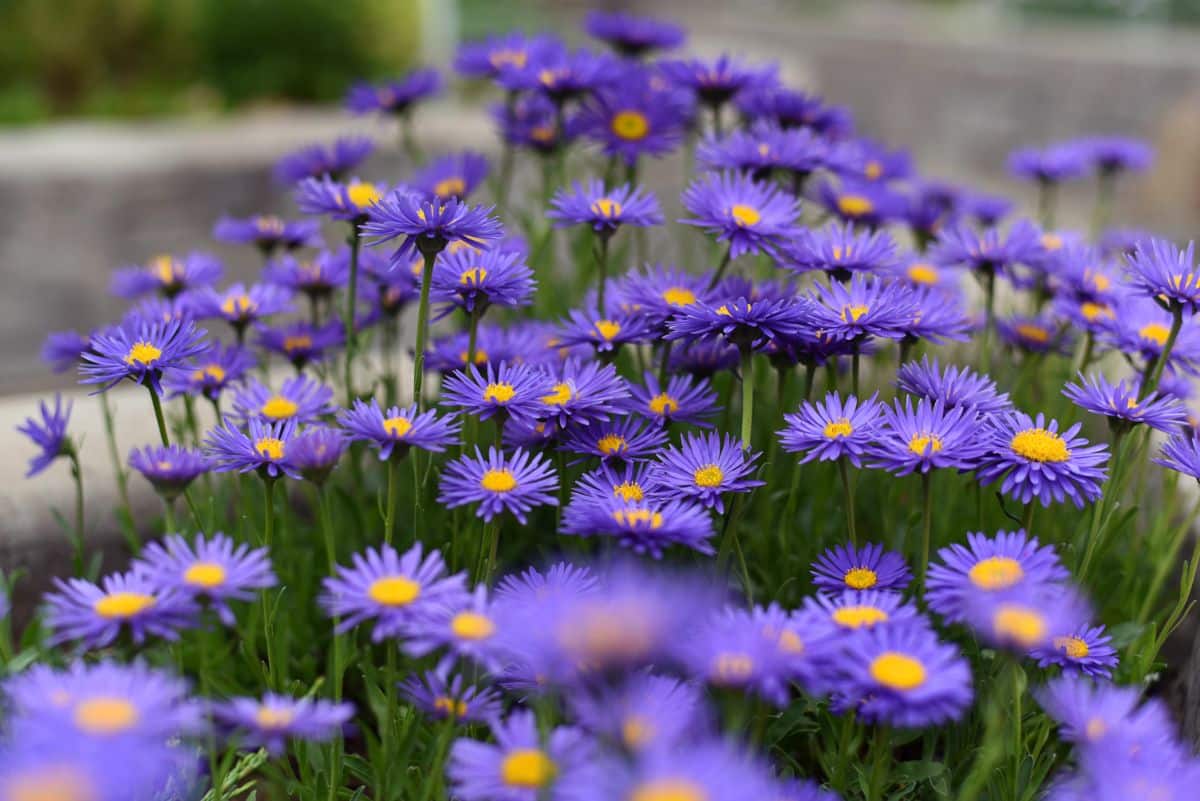
| Plant name: | Asters |
| Light requirements: | Full sun |
| Water requirements: | Moderate to low |
| Growing zone: | Zones 3 to 8 |
Asters are autumn favorites, and in most areas, aster blooms die back when winter starts. But in mild climates, asters can continue to flower through early winter, and they put on quite a display when they do! Asters come in many different colors, but white and purple flowers are particularly common, and these plants coordinate well with many other cold hardy plants, including marigolds and nasturtiums.
After aster flowers fade, they produce lots of seeds, which readily self-sow if you don’t deadhead old flowerheads. Many wild birds, including finches, also love gobbling up aster seeds, so if you keep these plants in your garden, expect to see lots of birds! Plus, many types of asters are native to the United States, so these plants are ideal for native gardens and pollinator habitats, too.
Frequently asked questions
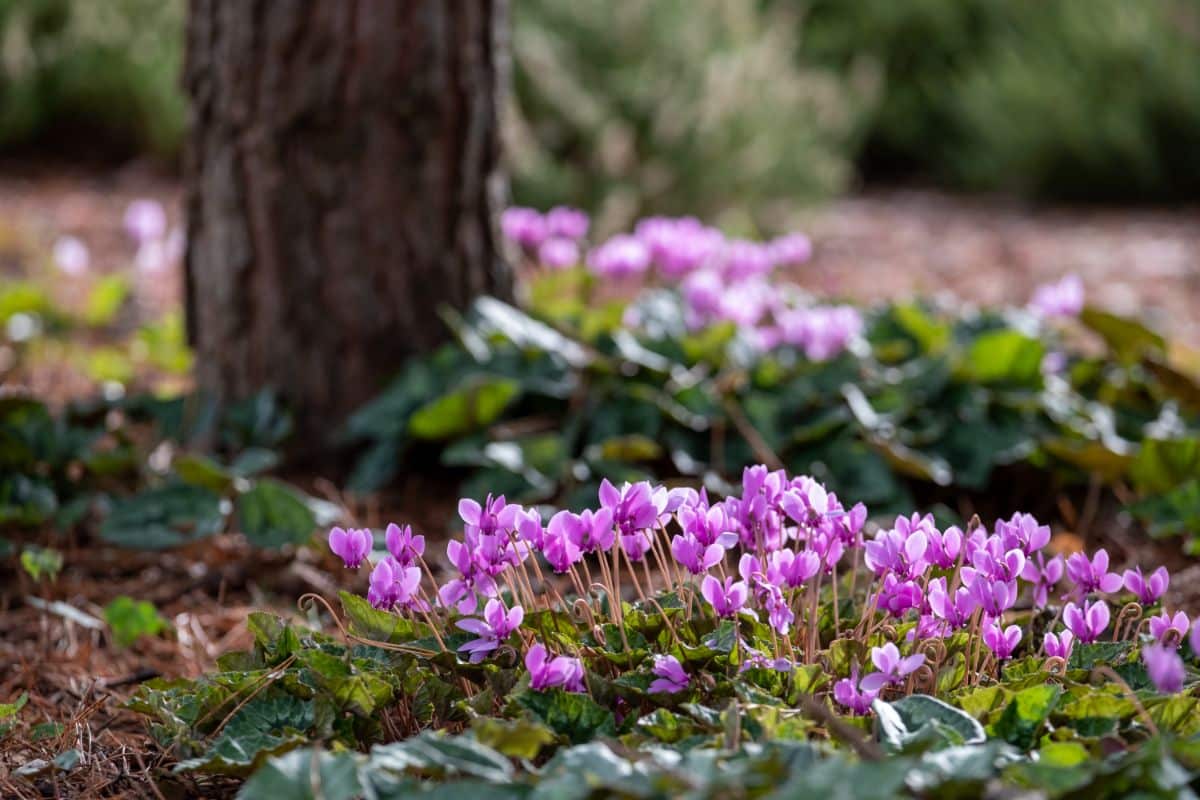
What are the first flowers to bloom end of winter?
Spring ephemerals are some of the first plants to bloom in spring while spring-blooming bulbs also flower earlier in the year than many other plants. Good examples of spring ephemerals include bloodroot, trilliums, and trout lilies. However, when it comes to spring, blooming bulbs, snowdrops, and winter aconite are some of the earliest plants to start flowering.
Why are my flowers blooming in winter?
Some plants naturally flower in winter in mild climates, and this is perfectly normal. But plants can also flower in winter, even in cool locations if there has been unseasonably warm weather. While it can feel exciting to see flowers blooming before they’re supposed to, plants that flower out of season are more likely to be damaged by cold when temperatures drop again.
Do any roses bloom in winter?
Most roses bloom throughout the summer months, but there are a few exceptions. Tea roses and China roses, for instance, can sometimes flower into winter in areas with mild climates.
Do any flowers bloom in the snow?
Yes! Although there are other plants that can sometimes push their way through snow, snowdrops, and hellebores are famously early bloomers that often start flowering even when the ground is covered in snow.
How do I protect my outside plants in winter?
Adding mulch around the base of plants in fall is one way to protect your plants from winter’s chill. You can also shield tender annuals from harsh winter weather by covering them up with frost blankets, cloches, or overturned cardboard boxes and upcycled milk jugs. Watering plants before frost can also help plants resist cold better, while underwatered plants are more likely to develop cold damage.
What temperature is a killing frost?
Frost occurs when temperatures drop to 32F, and some hardy plants can withstand even these chilly temperatures. However, temperatures around 28F and below create a “killing frost,” which causes most plants to die back for the season.
Summary

One of the many joys of living in a warm area is that you have a much longer growing season for cultivating flowers and vegetables. However, if you choose the right plants and use season extension products like cloches and frost blankets, you can continue to grow flowers throughout winter in many areas. But winter gardens always begin with careful plant selection, and the plants we’ve covered today are ideal for winter blooms!
While we hope you’ve found some garden inspiration in this guide, if you’re still looking for plants that will bloom in cold weather, check out our guide on early blooming, spring ephemerals or browse our list of the best perennials to grow for fall garden color!

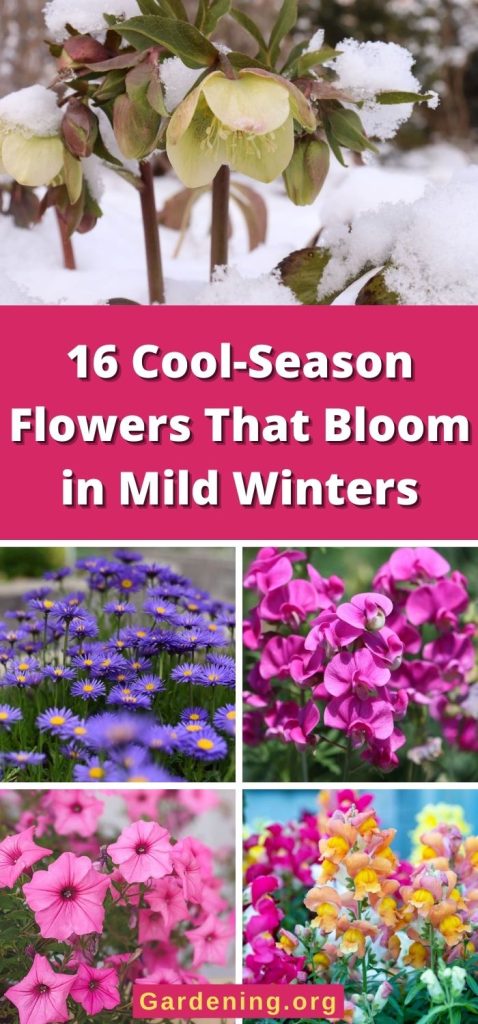
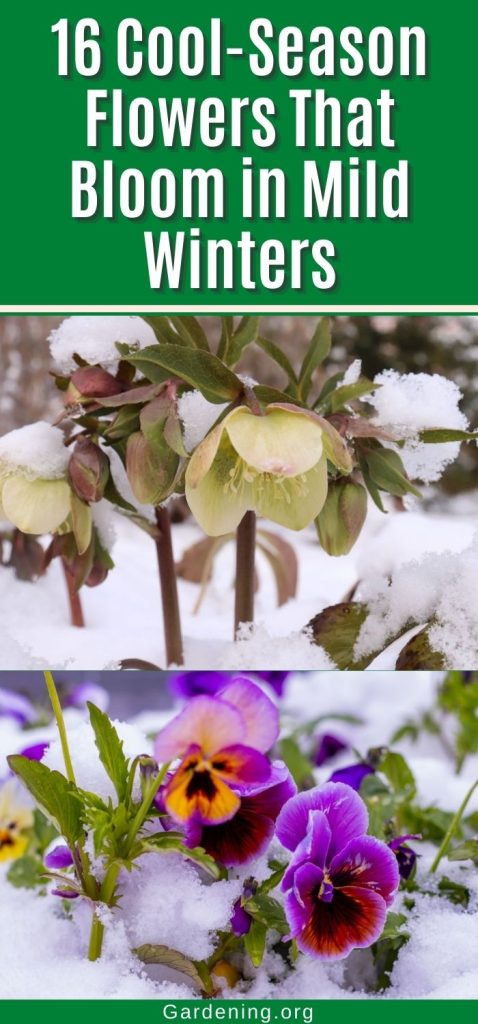



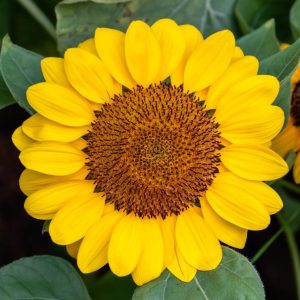
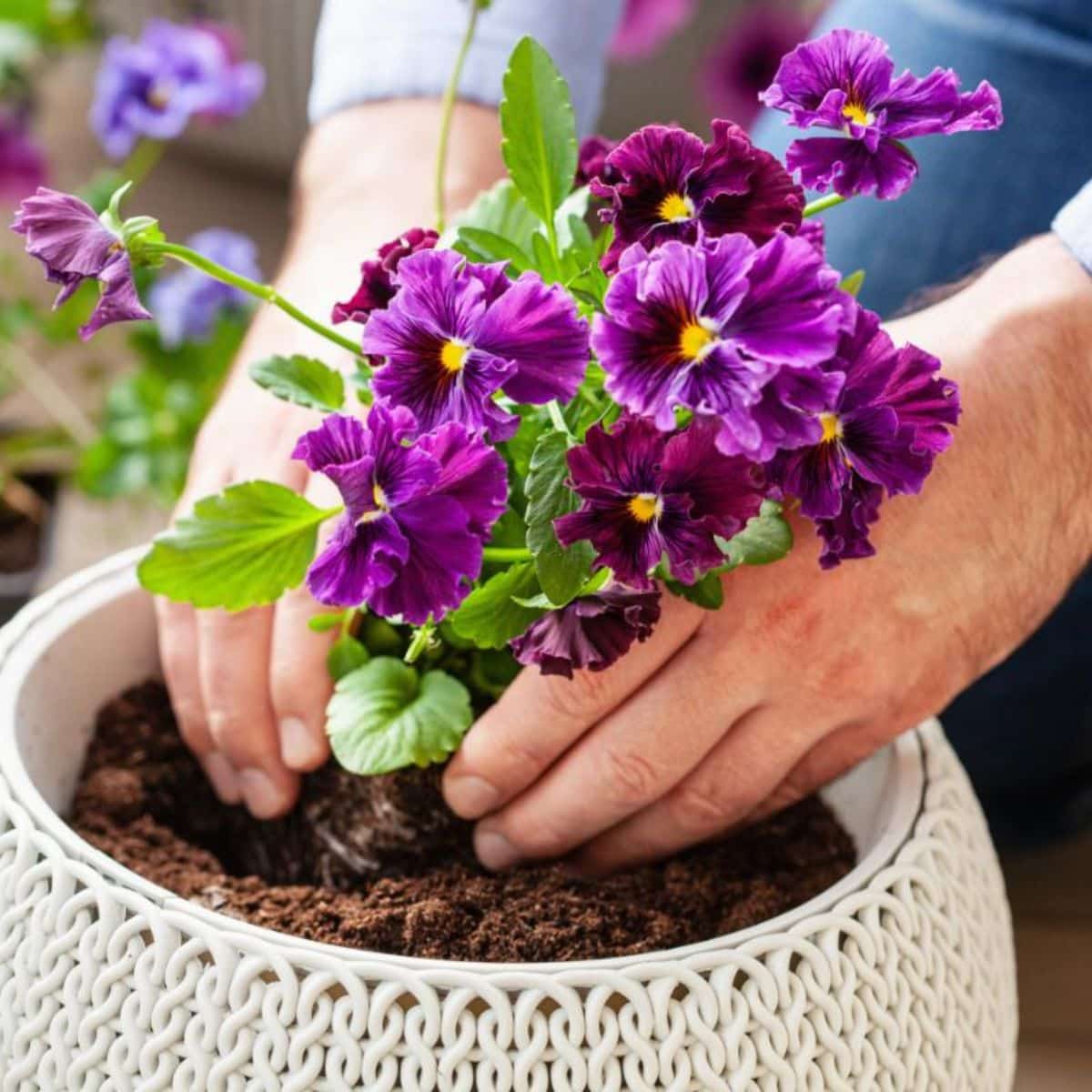
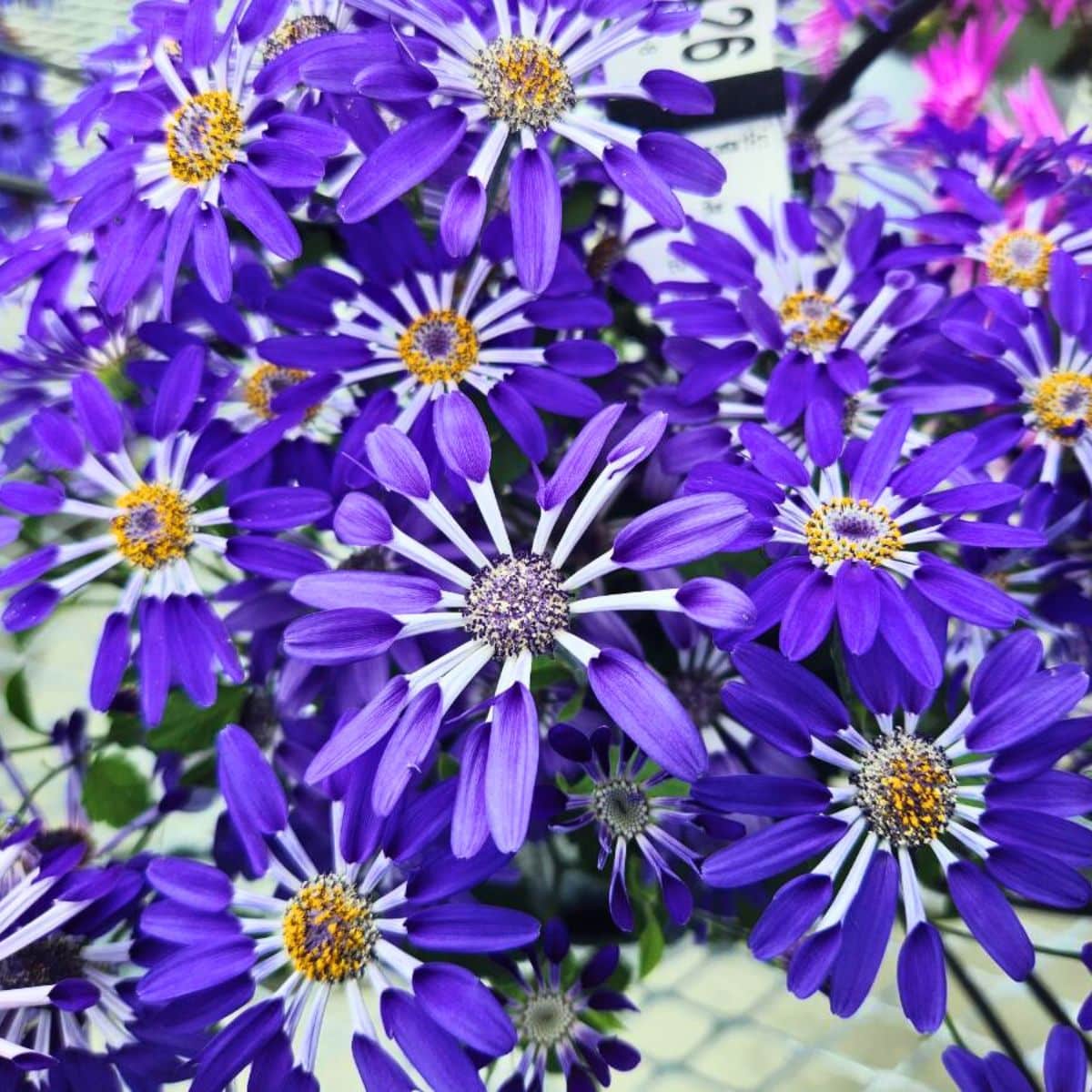
Leave a Reply